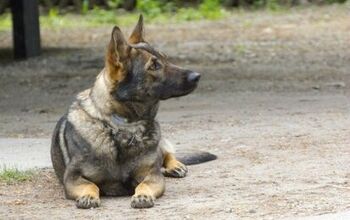New Research Gives Insight To Why Dogs Are Superior Sniffers

Scientists at Washington University School of Medicine in St. Louis, MO have found new insight as to why dogs have superior senses of smell. They’ve learned more about how a pivotal anatomy difference in their olfactory epithelium development may be the reason they have such an advantage over humans when it comes to smelling things.
Related: A Dog’s Nose Knows (How To Find Expensive Truffles)
It’s no nose news that dogs’ senses of smell are far better than humans, and the researchers believe that the olfactory epithelium in humans differs in complexity from the olfactory epithelium in dogs, giving them the upper sniff.
The olfactory epithelium is a flat tissue that lines the roof of the nasal cavity in humans, but in dogs, it develops more like a maze, with folds and curves over the turbinates in a dog’s nose. The oflactory epithelium has special neurons that attach to odor molecules and give off signals to the brain–that’s what we interpret as smell. Humans have far fewer of these neurons than dogs–hundreds of millions fewer– and so dogs have far more ability to smell things than humans do.
Dr. David M. Ornitz is the Alumni Endowed Professor of Developmental Biology with the research and says that they believe the bigger surface area of the olfactory epithelium makes a difference in how well we smell. Dogs are often trained to use that phenomenal sniffing ability to do everything from find drugs, bombs and bed bugs to even finding humans and cancer.
The study also may lead to more understanding about the evolution of senses of smells in animals altogether, and to understand why dogs got such better olfactory systems than humans did.
Related: A New Generation of Bomb-Sniffing Dogs Picked Based on Brain Scans
The team found that a stem cell called FEP controls the size of olfactory epitheliums and they also send signals to turbinates in the nose to tell them to grow. They believe that the signal swapping is where bigger/smaller olfactory systems develop and they’re curious about why the dog’s does so much more than a human’s.
Lu M. Yang is a graduate student with the project and said that before their work, no one knew that the epithelium grew from a small patch of cells into a sheet collaboratively with turbinates. This knowledge gives even more insight into the complex turbinate structure of dogs, and eventually maybe in humans.

More by Lori Ennis























